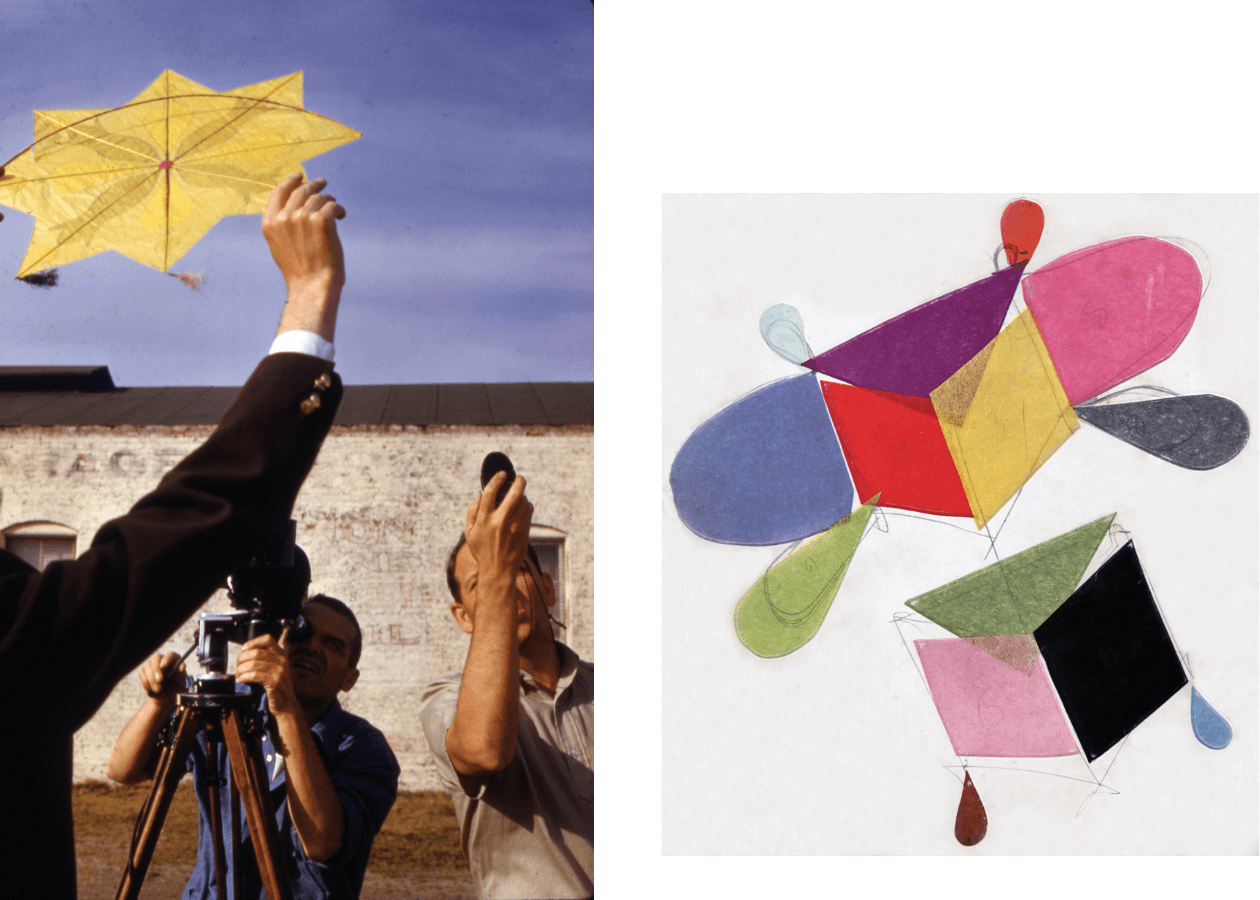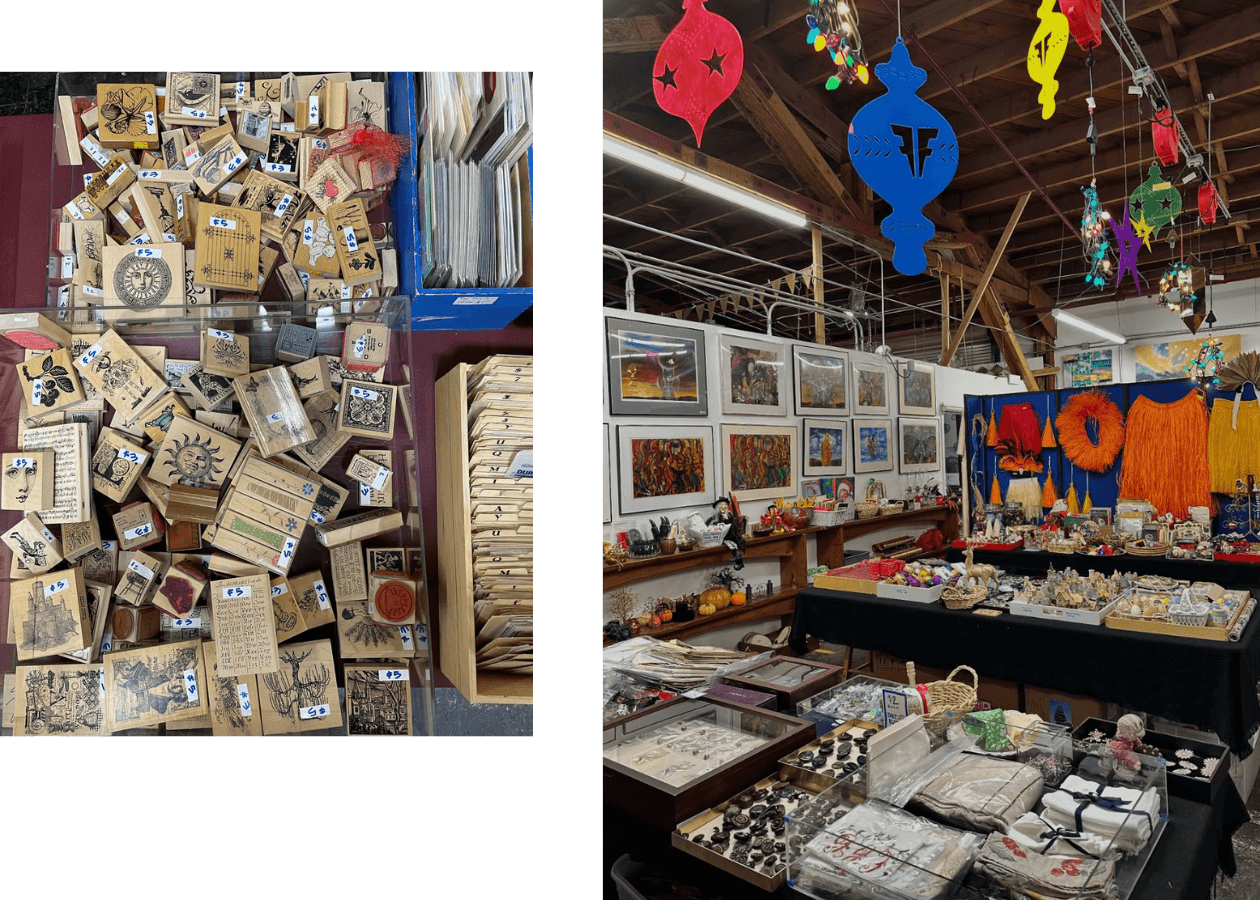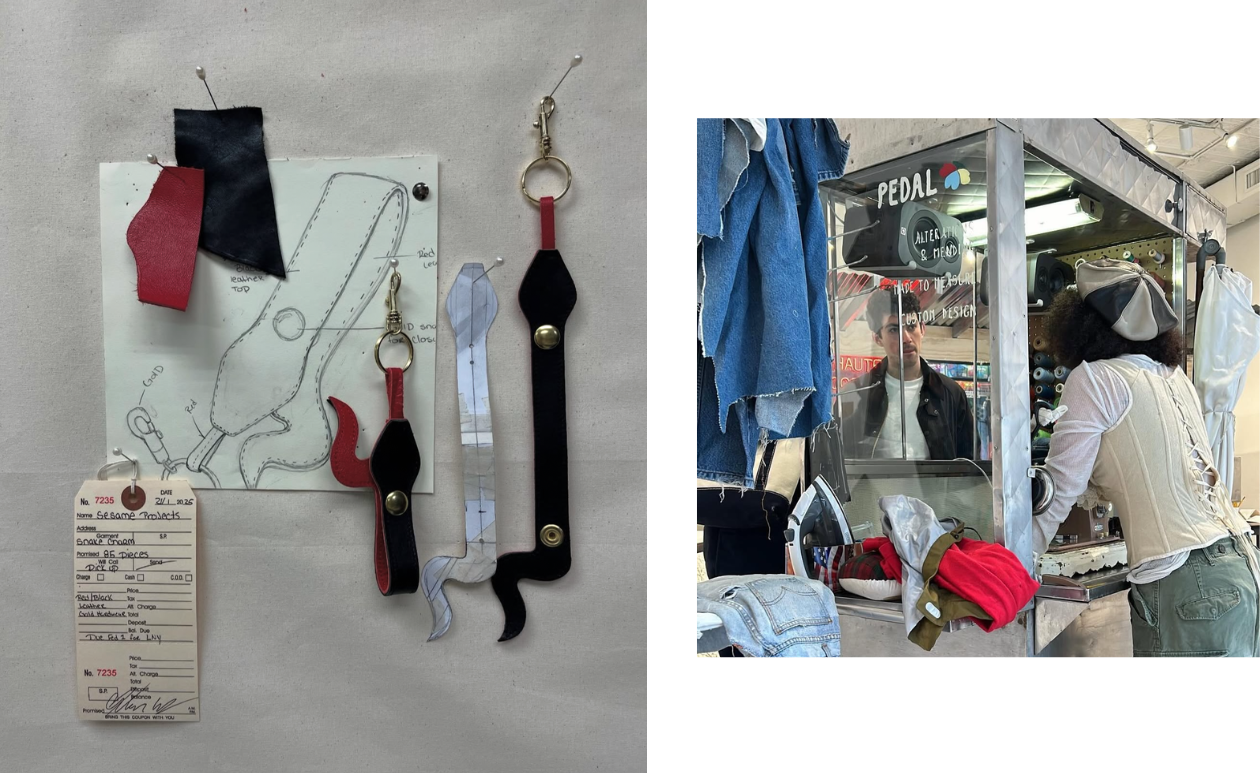The Regulars In The Arts & Crafts Aisles
Craft Society's Isabelle Rieken and Noa Mellul on Home Ec classes, kite-making and more
Welcome to The Regular — a new Busy Corner series where I ask the artists and creatives I admire to take me to their favorite physical, digital, or metaphorical places as we chat about the broader culture and social trends that have shaped them and by extension, their life and work.
Although this newsletter is designed to mimic a corner cafe on a busy city street where you get to overhear private convos and catch glimpses of strangers’ laptop screens among other things, becoming a regular in one of those places used to scare me. I thought it meant life got boring and stagnant until I realized that watching the way certain places, people, and happenings open up only when you stick around, beats that clean slate feeling of constantly finding yourself somewhere new.
Although in this series we are going to cheat a little and ask various regulars to tell us stories only a regular would know, I hope it inspires you to stick around somewhere to start a The Regular story of your own :)
With that, meet Craft Society's Isabelle Rieken and Noa Mellul who will take us through the arts and crafts aisles of vintage stores, estate sales, and all-American retail icons as we chat about Home Ec classes, the inspo behind their workshops, and more.
It’s impossible not to fall into a rabbit hole in a John Derian Company store. John, the owner of the shops, is an avid collector of antique prints that he turns into whimsical home goods, sold alongside a thoughtful curation of art, furniture, and decorative objects made by artisans and historical workshops. Anke Drechsel’s silk velvet pillows are stacked next to hand-stitched bedcovers from Jeanette Farrier on antique French beds, all overlooking Hugo Guinness’s whimsical portraits of fictional characters that are hung up on the walls. Even for people like me, who are easily overwhelmed by colors, patterns, and stuff in general, it feels like a joyful playground full of precious treasures made and curated with the kind of love that’s missing in most modern retail stores.
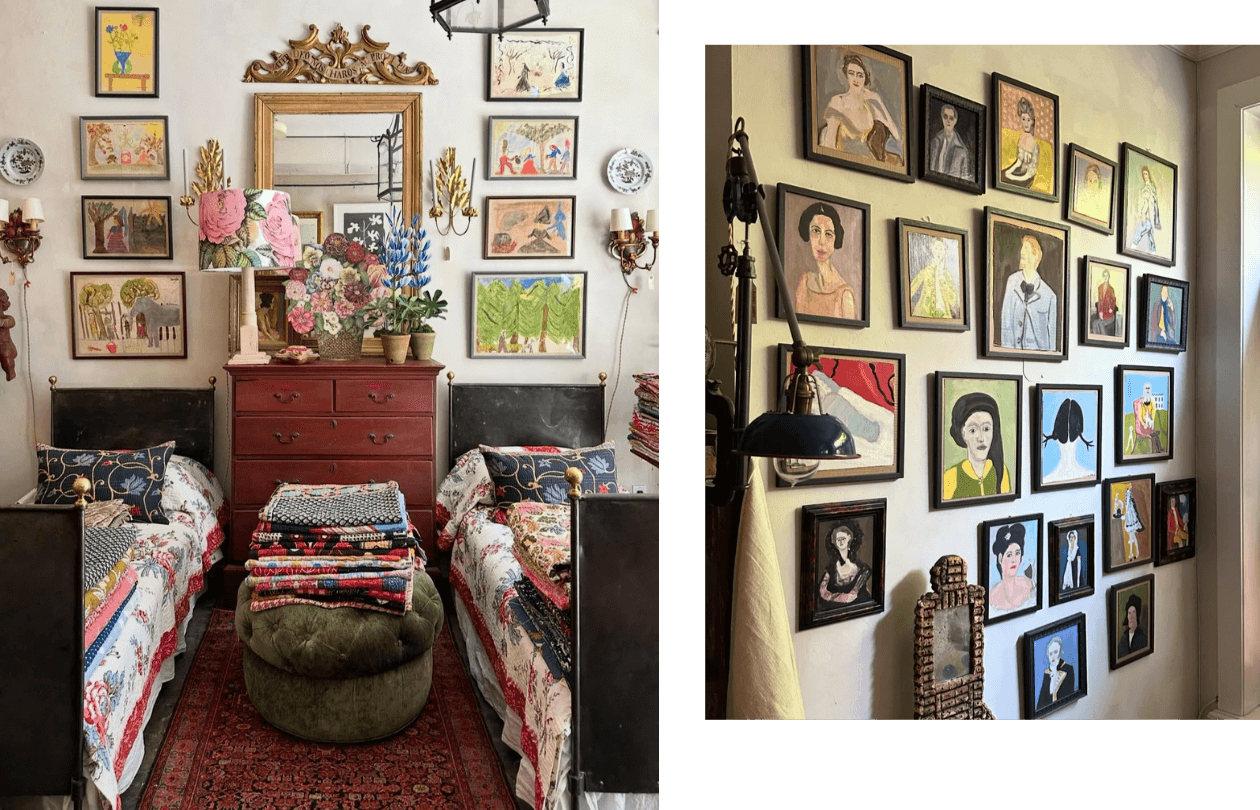
Places like this are a major source of inspiration for Noa and Isabelle and the workshops they host at Craft Society. Whenever they spot something interesting, their instinct is to figure out how to make it rather than buy it, and then help others do the same. This summer, they’ve taught their guests how to weave baskets and make kites out of natural materials as well as put together ribbon accessories, inspired by the horse girl renaissance and the recent work of designers, like Mimi Wade and Sandy Liang. But while seasonality (things “get cozier” in the winter with lots of knitting and crocheting) and visual trends certainly influence the type of workshops they offer, Noa and Isabelle’s core focus has been on heritage crafts and timeless folky objects.
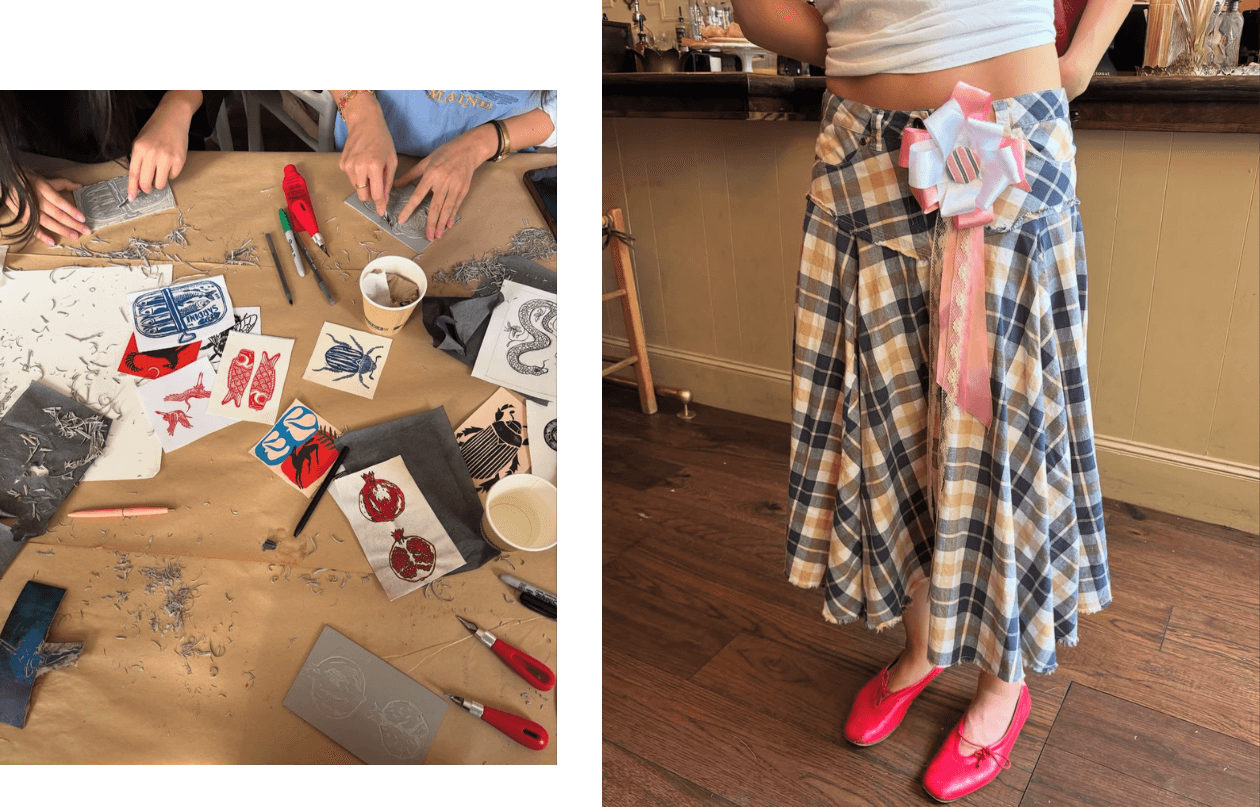
The kite-making workshop, for example, was inspired by the pictures of wind sculptures and kites that the two found in the “Wind” folder in the New York Public Library’s Picture Collection, the work of Charles and Ray Eames who often used them in showroom staging and advertising, and the history of mulberry paper and its significance in the craft of traditional kite-making in Asia. Noa and Isabelle actually just got back from a trip to Korea and Japan where they admired the weaving work of craftsmen in Kyoto, made pottery at the Takigahara Farm in Ichikawa, and learned heritage fabric crafts at Gallery Mir in Seoul. But perhaps their most surprising evergreen source of inspiration are the Home Ec classes taught in American high schools in the 60s.
While there was certainly a wildly sexist side to them — the three of us establish quickly in the wake of the trad wife nostalgia — Noa and Isabelle see a modern take on those classes as an opportunity to help people of all genders regain appreciation for craftsmanship and well-made objects amidst an overconsumption crisis as well as rebuild the confidence in being able to take care of themselves in a rocky socio-economic environment. The prospect of being able to fill their homes with unique, handmade objects without shelling out thousands of dollars on designer decor, make a one-of-one pair of pants or even mend a pair that was made back when luxury was still synonymous with quality, is increasingly exciting to people, they explain, as they proudly show me the couch they just built together for Noa’s apartment.
There is also a strong desire to be playful driven by the newfound appreciation of “girlhood” in the zeitgeist which for Noa and Isabelle, is a genderless term. It’s just as much about twenty-year-old girls making Victorian valentines over milkshakes and sundaes and their own story of meeting each other on a trampoline as it is about fifty-year-old New Yorkers gathering in a book store after hours to make paper stick puppets and young men running around a park with a kite they just hand painted. Everyone is welcome to sit at the Craft Society’s big communal table, get a little messy, and remember how to entertain themselves and connect with others via something other than a phone screen.
Although the interest in crafts is resurging in a form of counterculture to consumption (remember when girls on TikTok taught each other how to DYI a bag from the Sandy Liang x Baggu collab?), they can quickly get wildly expensive. A pottery class in Manhattan, for example, can run you anywhere from $100 to $300 dollars — an intimidating sum for an amateur to bet on their ability to make something nice and useful for their home. To keep the cost of their projects and workshops low, Noa and Isabelle are always on a hunt for beautiful buttons, fabric, yarn, and other small treasures at local thrift stores, estate sales, and charity shops. “Whenever I am in San Francisco, I go to this store called SCRAP and come back to [New York] with a suitcase of craft supplies,” says Isabelle. “I love that place, but I only get to go like once a year.”
“Does it make you nervous that the resurgence of interest in crafts is powered by the internet? The very place that gave us microtrends,” I ask Noa and Isabelle as I start to imagine another wave of pre-packaged DIY kits and TikTok users picking up and abandoning crafty hobbies just as fast as they change their outfits. “Our focus is traditional crafts,” says Noa. “It's something that won't really die out because they are meant to be preserved.” While some of the objects they help their guests create are decorative and entertaining, many, like baskets and market bags, are useful day-to-day. “And also, community is never going to be trendy,” she adds. “People want to connect with other people, and I think they don't feel connected through their work or their phones anymore.”
As I leave Noa and Isabelle, I spend at least an hour gasping over rabbit mugs handmade in Paris and antique figurines and boxes sold in John Derian Company stores, and think about planning a trip to the Bay for the second time this month. But most importantly, I try to imagine what fashion, design, and other creative industries could look like if instead of fostering false sense of luxury, individuality, and exclusivity, they shifted their focus back to craftsmanship, preservation, and community.
IN THE MARGINS
In the research process for this, I came across Maw studio and realized that it’s ran by Makayla Wray who also runs a street repair cart and up-cycling workshops in New York.
Can’t remember how exactly I got here but I am fascinated by the now a bit dated discourse around artist Lucien Smith attempting to revive an iconic Soho restaurant Food:
“The original was founded by Carol Goodden, a dancer and photographer, and her then-boyfriend, the late artist Gordon Matta-Clark. With regular hours and a huge cast of occasional workers, it operated as art-world employer, cafeteria, and de facto meeting spot for everyone from Trisha Brown and her dancers (of which Goodden was one) to Philip Glass’s collaborators. The new Food is being opened by Smith, a creative director and producer named Ken Farmer, and Laurence Chandler, a menswear designer who used to manage Ye’s brand, Yeezy. The original was born on Prince Street at a time when working a couple of shifts a week might cover your loft’s rent. The new Food will be in Dimes Square, two blocks from a luxury hotel. Smith says that no matter how “corny” anyone thinks it is, Dimes Square is for artists. “This is my Soho,” Smith says, “and I’m very into it.”
If you see a young adult posting about their weekend in The Hamptons, odds are Montauk General Store matcha cups are making an appearance. The catch? MGS is a “fake” store that doesn’t have a prominent physical location. In my latest story for Inc., I chat with he founder Kate Diament about bottling up vibes and lifestyle into products and navigating the nation-wide all-year-round obsession with a local lifestyle she grew up with. Spoiler: there is much more appetite for MGS in the city than out east.



